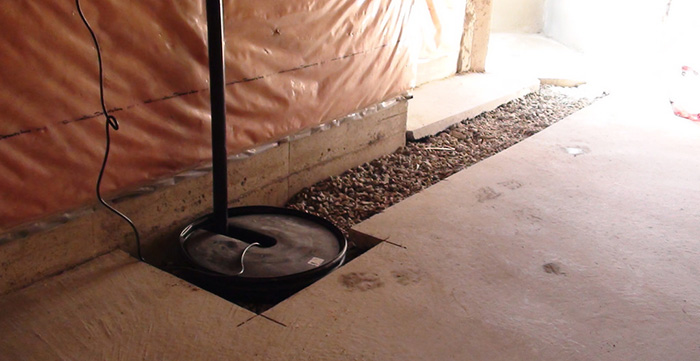Do I need a Sump Pit and Sump Pump?

Some houses do not have an efficient way of getting rid of unwanted water from the outside of the building, and the answer to this is a sump pit. The sump pit is usually located underneath the basement and from here the water is either wicked away into the land around the house, or pumped out on a regular basis.
A basement which is below the water table is especially prone to flooding and a sump pit can be essential in these circumstances. Water problems in a basement can be serious, as it can cause damp and mould – usually thanks to a lack of fresh air and ventilation – which can be a health hazard as well as affect the structure of your home’s foundation.
Connected to the Drain
The sump pit is usually connected to a sump pump which pumps the water out into the drainage and sewer system. Often the pump is fit with a float which triggers the pump when the water reaches a certain level. This ensures that in any occasion except extreme circumstances, the sump pit cannot overflow.
Sump Pump vs Sump Pit
The main difference between a Sump Pump and Sump Pit is that the Sump Pit collects ground water and the Sump Pump removes the water from the pit.
A sump pump and a sump pit are two essential components of a basement waterproofing system. The sump pit, also known as a sump basin, is a dug-out pit in the basement floor that collects water from the surrounding soil or from foundation drainage systems. It serves as a reservoir for water to accumulate.
On the other hand, a sump pump is an electrically powered device installed in the sump pit. Its primary purpose is to remove water from the sump pit and discharge it away from the building. The sump pump is equipped with sensors that detect rising water levels, triggering its operation to prevent basement flooding. In summary, the sump pit is the container that collects water, while the sump pump is the mechanism that actively pumps out the excess water from the pit to keep the basement dry.
Do I need a sump pit and a sump pump?
It is recommended that if you live in an area especially where it rains or snows a lot, you fit a sump pit. And if you have a sump pit, you really should have a sump pump. Although you might be able to get a professional to help you to empty your sump pit, a specially fitted pump is a much safer, more reliable and convenient option.
Sump pumps can be bought in most hardware stores, and either fitted yourself if you a good at DIY, or by a professional, who will ensure a good job, and that it is all working effectively.
Sump Pump Maintenance
It is important that you make sure that your sump pump is properly looked after so that it is working properly. After all, if it is not working properly, you might end up with basement flooding, and worse than that, the flooding of old and dirty water from the sump pit.
- You can check that your pump is working by throwing in a bucket of water to make sure that the float triggers the pump.
- Make sure that your sump pump is always upright so that the float works properly, and pumps the water out when it has reached at a certain level.
- Every now and again, remove the pump and clean it, along with the pipes connecting everything together and make sure that there are no leaks. It is a good idea to do this before and after the months with the most rainfall so that it is working properly all year round.
- Some people like to have a second sump pump as back up, in case there is a problem with the first pump.
If you need to have a sump pit, it is recommended that you also get a sump pump, for ease and the most effective removal of water. For more information about sump pits, pumps and their fitting, get in touch with us today.